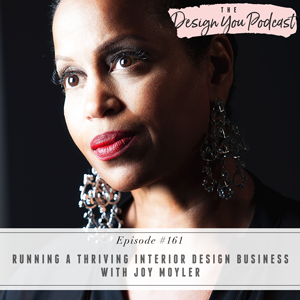
It’s rare nowadays that I have an Interior Designer on the show where we talk about all things interior design, but that’s what we’re doing today, friends! I don’t know anyone in the design industry that’s had a more glamorous, successful career than Joy Moyler, and she joins me to share her incredible accomplishments and wisdom this week.
Joy Moyler has been in the Interior Design industry for 30 years and has a super impressive portfolio of projects, having worked with the likes of John Saladino, Ralph Lauren, Thierry Despont, Giorgio Armani, and more. She set up her own business in 2011, and now works all over the world on an array of fascinating projects, and she truly loves what she does.
Listen in this week and hear the fascinating trajectory Joy has taken in her life and business and her experiences working with incredible design firms across the world. Joy shares what it’s like constantly working across multiple time zones, what it takes to run a thriving interior design business, and why there’s no express lane in your career; you have to work for what you want.
If you want help creating a business with thriving revenue streams so that you can design the life you really want this year, now is your chance! We’re going to be opening the doors to the Design You Coaching Program really soon, get on our waitlist now!





